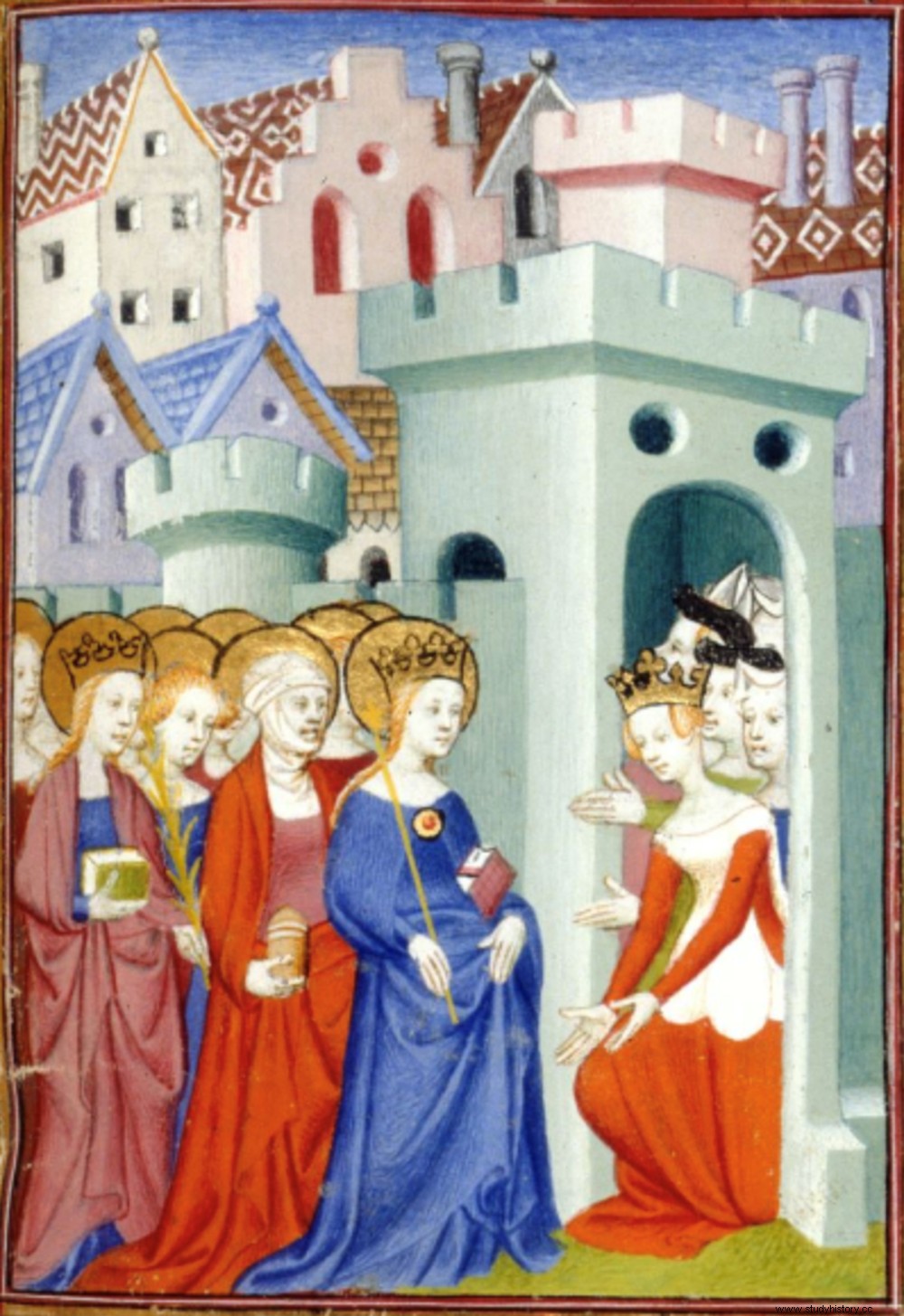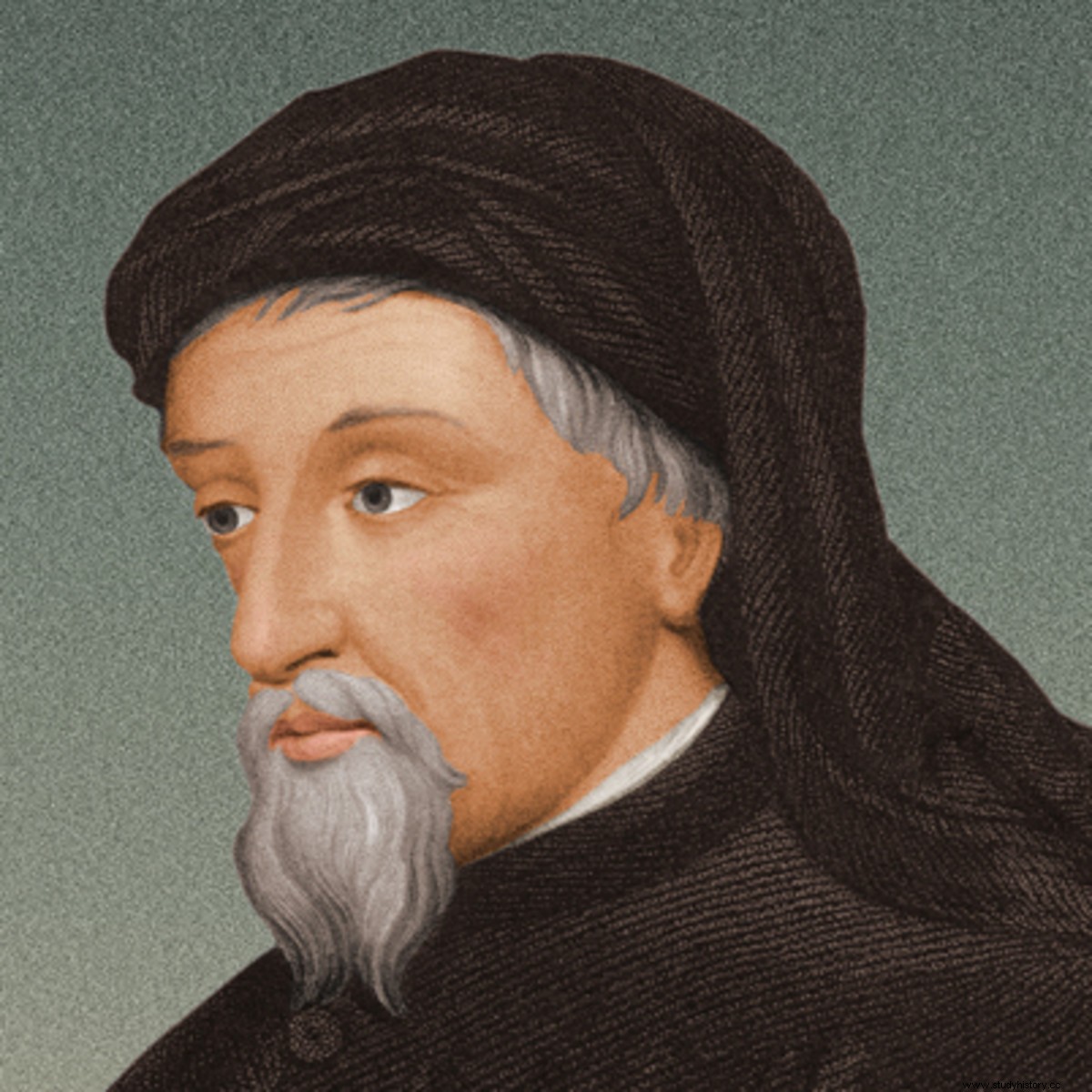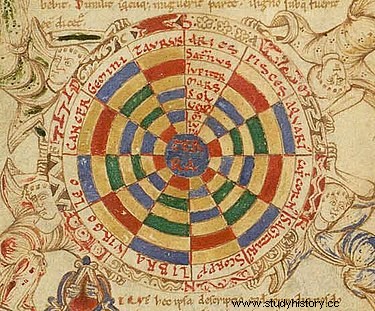European history is rich, well known and famous. From the neoclassical architecture, magnificent fashion and pioneering literature of the Renaissance, to the powerful musical compositions and politically moving polemics of the 20 th century; the different epochs in European history have not become unknown. That is, all but one epoch.
The medieval period is all too often ignored. In discussions about works of art, music, architecture and literature that change the world, people forget the contribution of the Middle Ages. And when it is mentioned, it is unfortunately viewed with disgust. People see it as a period of budding superstition, lack of hygiene and - naturally - bubonic plague.
But there is much more to medieval Europeans than disease and superstition. The literary works of his time paved the way for writers such as Shakespeare, Wordsworth and Jane Austen.
The popularity of dream visions in particular makes medieval literature an exciting read. In the wake of Jung and Freud's ideas, it's amazing to see how widespread dreams are in art - from the 14th century to today.
Dream Vision:A Genre

The dream vision was a literary form that reached its peak in the late Middle Ages, although its use precedes this era of European history. The form was used in a number of ways throughout the period. Because of this, it captured the interests of both contemporary and contemporary audiences.
Usually, dream visions are narrative and written in verse. They use a literary technique called "frame narrative". This technique involves one story being told in another. Often the narrator would navigate the dream with the help of a guide (an angel, a saint or a person).
Characteristics of dream vision
Each dream vision is unique, and often contains the author's own individual spin and commentary. But as a genre, they tend to follow a similar structure of events. First, the narrator, usually a man, falls asleep in the middle of a life crisis or activity. Secondly, the narrator is in a beautiful natural place - known in the academic field as locus amoenus . Usually this place is a kind of garden or forest, filled with beautiful plants and animals.
There, the narrator meets a leader who then leads them to more allegorical visions. This is often done for the purpose of pointing them to some major spiritual or philosophical truths. The narrator will often ask the guide about the meaning of these visions - often to no avail, as they are meant to remain a mystery. Finally, something makes the narrator wake up before the full meaning of the dream can be explained. The meaning of the dream remains a mystery, for both the narrator and the reader.
Popular examples of dream poetry

In this section we will cover some examples of dream visions that were popular both during the publication and long afterwards.
The romance of the rose
The dream vision became a popular literary form on 13 th century with the publication of The Romance of the Rose. This poem, started by Guillaume de Lorris and completed by Jean de Maun forty years later, is an example of the genre.
Guillaume's section presents the reader with a dreamlike allegory of moving a woman. Her character is represented by a rosebud, and the events take place within the boundaries of a garden (which represents a polite community). The boy who charms her is the narrator himself. In the dream, the god of love shoots him with arrows, so that he is struck by the rosebud. He tries to take the rose for himself, but the gardeners resist him. In de Maun's sequel, he manages to take the rose through his own wit and cunning.
Chaucer's dream vision
Geoffrey Chaucer is one of the most famous names in English literary history. His many works inspired an incredible number of English writers to create some of the most memorable works in the literary world.
He is best known for the Canterbury Tales , a series of stories told from the different perspectives of characters on their way to a place of pilgrimage. However, Chaucer is also known for his dream visions, probably written in imitation of the French. Examples include the Duchess' book, the House of Fame and the Parliament of Fowls.
Although his dream views are considered to be culturally effective, ideas about dreams have great significance in some of Chaucer's other works. For example, the Nun Priest's Tale in the Canterbury Tales describes the arguments of a well-read rooster, Chauntecleer and hen, Pertelote. The two argue about the validity of the former nightmare of being caught by a fox. In this story, they think about the meaning of the dream and dreams in general. Chauntecleer quotes biblical and classical texts for authority. This points to the importance of dreams, not only for Chaucer, but also for his cultural context.
The Dream of Scipio
Among the most famous and cited examples of a dream vision - often referred to even within other dream visions, especially Chaucer's work - is the Roman author Cicero's Dream of Scipio ( Somnium scipionis ). This work describes a fictional dream vision of the Roman general Scipio Aemilianus.
The story follows the typical path of a dream vision. The narrator, Scipio, sees his dead grandfather at adoption in a dream, which acts as a guide. The grandfather first predicts his future. Later, they move on to a long and deep discussion about celestial bodies, where information about the planets and their movements is revealed to Scipio.
The legacy of the text is indescribable. It inspired countless works in various media, from a Mozart piece to paintings and poetry.
Pearl
Pearl is a poem that uses the dream vision to illustrate the effect of grief. The narrator, a jeweler, who searches a garden for a lost gem. There he falls asleep and imagines a magical setting, which contains a stream that flows over jeweled stones. The poem ends with a vision of the heavenly Jerusalem from the Bible. There the narrator finds a new white, round symbol, the sacrament, which is to replace the lost pearl. The guide, in this case, is a young virgin. Within the poem, the narrator finally realizes that she is the daughter he lost when she was two years old.
The structure of the poem is as important as the context. The poet has organized his 1212 lines into stanzas linked by a keyword in the last line, and the repetition in the next line. In this way, the structure mimics that of a pearl necklace.
The Dream of Rood
Perhaps the earliest dream vision in Western European history is The Dream of Rood. This poem was written in Old English between 8 th -10 th century AD
In the poem, the narrator sees a jeweled tree. The tree then begins to speak - much like the guide usually found in dream vision. It informs the narrator that it was the same tree that was cut down to make the cross on which Christ was crucified. The narrator then experiences a vision of Christ on the cross. Afterwards, he listens to Rood's suffocated and miserable feelings about Christ's torture.
Book of the City of Ladies
The history of Western literature is more often than not populated by male writers - especially in its earlier stages. However, the French author Christine de Pizan breaks that form. De Pizan was a writer at the court of Charles VI in France, and contributed greatly to medieval literature. Frustrated by the misogynistic nature of most legal literature - especially the praise of the Romance - she decided to write a book in response to her cultural context.
Through this she created the Book of the City of Ladies , where she aimed to treat women in a more positive light. In the text, they see Pizan - who also acts as the narrator - for himself falling asleep. During this time, three personified virtues (reason, justice, and fairness) visit her. They tell her that God has chosen her to improve the woman's name and reputation. To do so, they suggest that she build a metaphorical city to house many heroines and noblewomen, and protect women from outside attacks.
Dream Theory:Medieval Culture and Its Influence

Medieval culture's interest in dreams and dream visions did not come from nothing. It is part of a larger cultural framework, the legacy of earlier literary texts such as The Dream of Scipio , and ideas about dreams inherited from the Christian tradition, which were widespread at the time.
Literary Context
Plato's allegory about the cave in the Republic , Aenea's vision of the underworld in Aeneid and Macrobius's Commentary on Scipio's Dream - as well as the dream itself - all set a literary and cultural precedent for the conversations and stories of dreams. These early examples introduced what would become the conventional structure of a dream vision, with a narrator telling of a doomed experience and pondering its significance.
The role of Christianity
Christianity and the Bible were central to medieval culture. Therefore, it is important to take them into account when examining the general context around the production and reception of dream vision.
The Bible contains several descriptions of dreams, including those in the book of Job and in the book of Numbers. Both passages suggest that God can appear to people in dreams or visions. The Old Testament also tells a long list of dreams, visions or revelations that Pharaoh, Joseph and Ezekiel experienced; while the New Testament contains St. Paul's vision of being caught in paradise.
Because of this, it is likely that the authors not only felt empowered to include elements of dreams in their works, but also felt it was necessary. In their eyes, dreams were more than mere hypothetical fantasies to explore - they provided a direct experience of God, or contained a deeper, more pious message.
The Legacy of the Dream of Scipio
As mentioned earlier, Cicero's Dream of Scipio was a central text in the history of dream visions. It paved the way for the genre's future popularity and influenced a large selection of writers in Western European history. In the Middle Ages, however, it was a commentary on the text that gained great popularity and credibility within the literary context. Known as Macrobius's Commentary, and named after the Roman grammarian and philosopher himself, Macrobius contributed to the dream theory of both his age and the Middle Ages.
In particular, he detailed five categories of dreams. The enigmatic dream (somnium in Latin) is the first. According to Macrobius, it was one of the most difficult to interpret, as it "hides strange shapes and veils". The second type, the oracular vision (known as the oraculum), involves an authority figure (a parent, an honored man, a priest, or even a god) who reveals future events, along with the necessary actions to avoid them.
Third, according to Macrobius, the prophetic dream (visio) showed events that would come true, with or without one's input. Nightmares (insomnium) probably do not require much explanation - Macrobius believed that they were caused by mental or physical illness, or anxiety about future events. The last category, the revelation (visa), will be experienced for a while between sleep and wakefulness. Macrobius did not say much about it, dismissing it as unimportant.
With this in mind, it is clear that medieval Europeans dream so significantly. A dream, for a person living in the Middle Ages, can be an encounter with the divine, or even a prophecy.
Social and political contempt
Apart from Chaucer, whose dream poem was usually about love, fame, fantasy and sometimes personal grief, other English and European poets used the dream vision to address more serious topics.
The high mortality rate from the Black Plague led to the sudden growth in city centers as rural workers migrated. This resulted in the emergence of a new, mercantile class, causing social and structural discomfort as it blurred the once rigid and clearly defined boundaries between noble and ordinary. It was for this changing society that dreamers would often direct their messages and criticisms - disguised under the illusion of fiction.
Cultural significance of dream poetry
Dreams have always been important. They give us an insight into a world we do not know, a world that is both entirely of our own creation and beyond our conscious understanding.
The mysterious, unpredictable world of dreams - like the imagination - gives us tools we can use to understand both ourselves and the world around us. And that was something the medieval writers understood, despite not getting the credit they deserved.
If we take anything away from delving into the history of medieval dream poetry, it should be that medieval Europe was much more refined than we think it is. It was a time marked by various questions - from social and political unrest, to widespread disease and severely limited scientific understanding.
But we should not let these problems define the Middle Ages. Instead, we should take the initiative. We must explore the various works of art, literature, architecture and music it has to offer. We must understand the context that produced, shaped and received them. Then - and only then - can we come to a fair and just conclusion.
